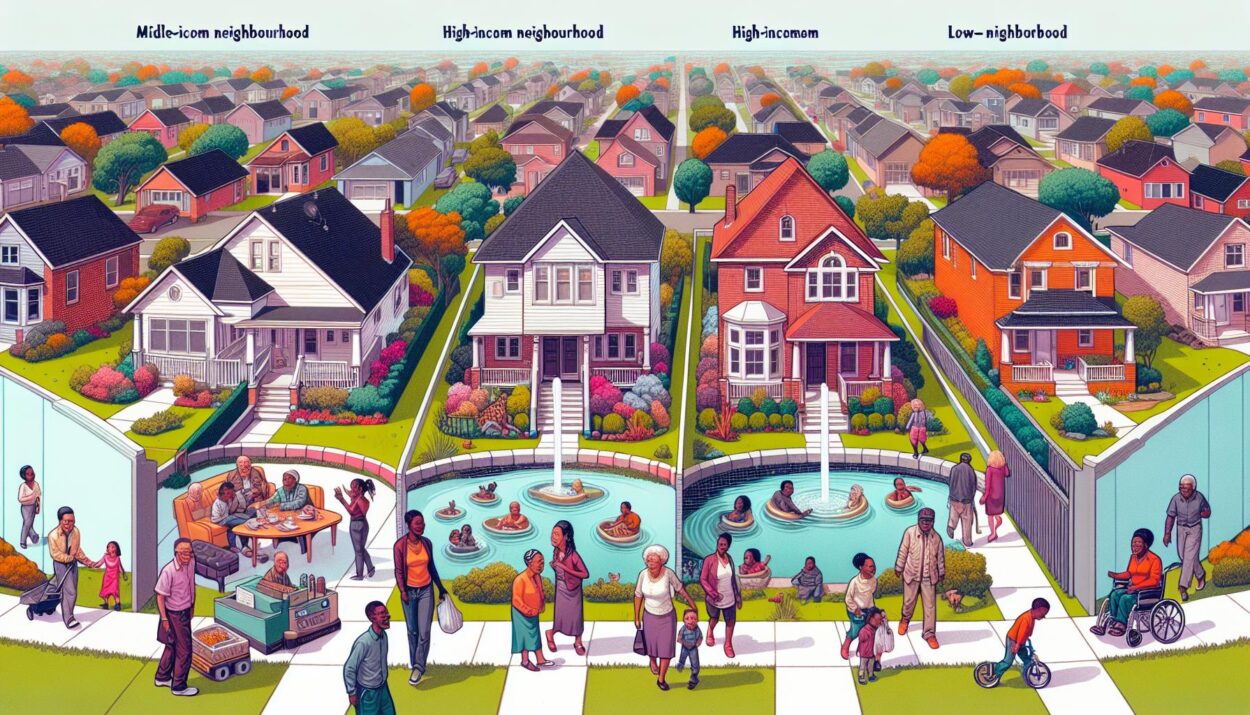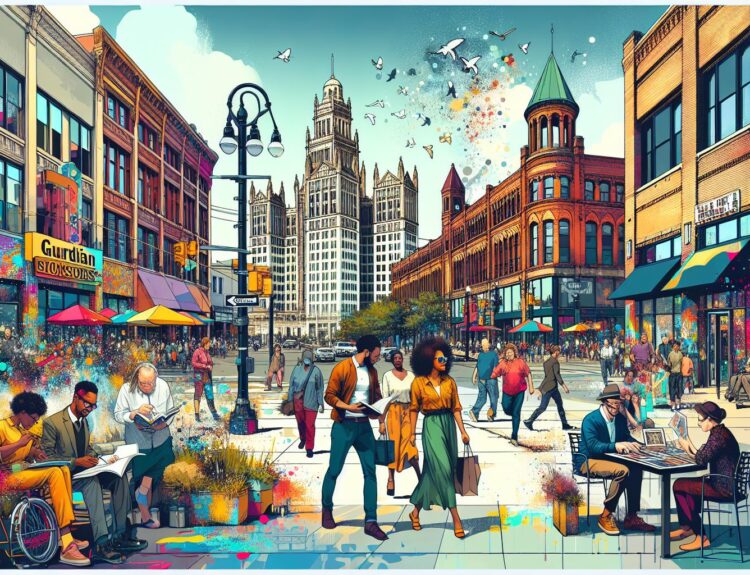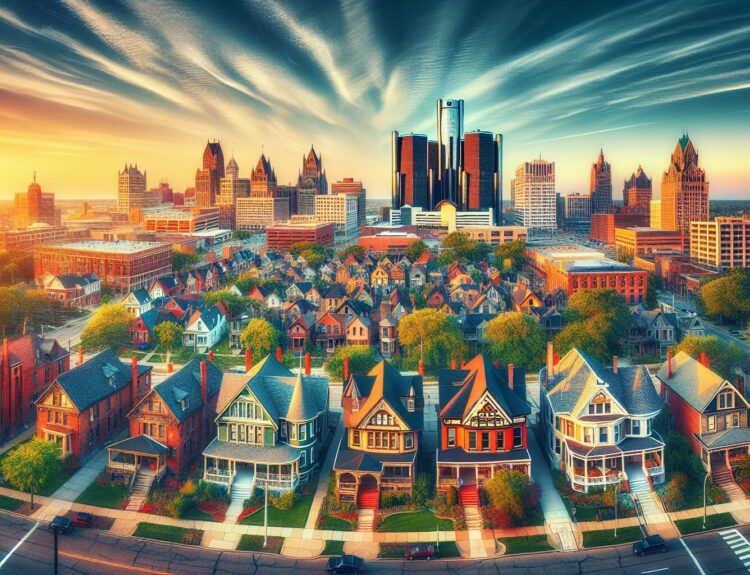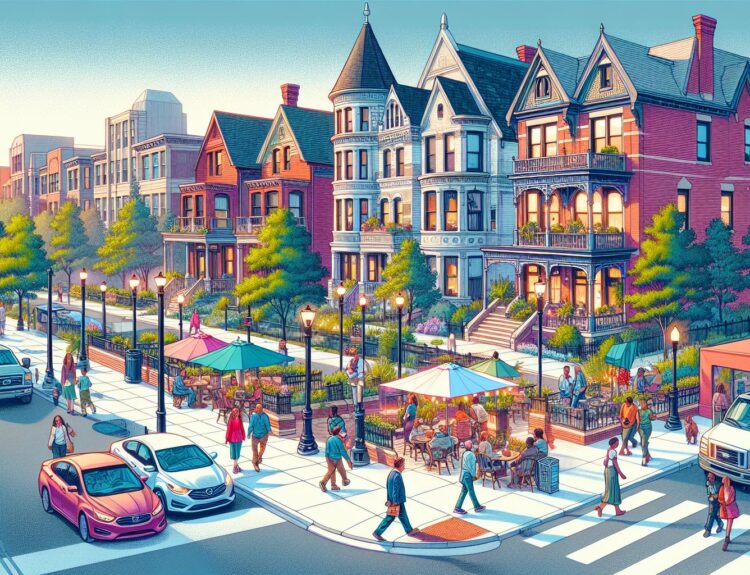Growing up in Detroit, I’ve always been fascinated by the diversity of income levels across different neighborhoods. From the bustling downtown area to the quieter suburbs, each part of the city has its own unique economic landscape. In this article, I’ll delve into the average income levels in various Detroit neighborhoods, shedding light on the disparities and opportunities that exist within our community. Get ready to explore the financial tapestry of the Motor City with me!
As a proud Detroiter, I’ve witnessed firsthand how income levels can shape the fabric of our neighborhoods. Whether it’s the historic districts with their charming homes or the up-and-coming areas undergoing revitalization, income plays a crucial role in defining the character of each community. Join me on a journey through Detroit’s diverse neighborhoods as we uncover the stories behind the numbers and discover what makes each pocket of our city truly unique.
Through this exploration of average income levels in Detroit neighborhoods, we’ll uncover more than just statistics – we’ll uncover the heart and soul of our city. From the thriving commercial corridors to the quiet residential streets, every neighborhood contributes to the rich tapestry of Detroit life. So, grab a cup of coffee and join me as we dive into the fascinating world of income diversity in the neighborhoods that make up our beloved Motor City.
Exploring Detroit’s Neighborhoods
Detroit is a city brimming with a diverse array of neighborhoods, each with its own unique character and charm. With over 200 neighborhoods, there is truly something for everyone in the Motor City. From the historic streets of Corktown to the artistic enclave of Midtown, every corner of Detroit has a story to tell.
- Corktown: Known for its historic charm and vibrant community spirit.
- Midtown: A hub of creativity and culture, home to art galleries and trendy cafes.
- Downtown: The bustling heart of Detroit, filled with skyscrapers and cultural attractions.
Whether you prefer the bustling energy of downtown living or the quiet streets of a suburban neighborhood, Detroit has it all. Each area offers a unique window into the city’s past, present, and future.
I’ve always been fascinated by the way income levels can shape a neighborhood’s identity. Income disparities exist within Detroit, contributing to the diverse tapestry of the city. From upscale enclaves to working-class neighborhoods, each area plays a vital role in the larger Detroit community.
- Median household income: $29,500
- Poverty rate: 33.4%
- Unemployment rate: 10.9%
As I delve deeper into the neighborhoods of Detroit, I’m continually struck by the resilience and spirit of its residents. Each area has its own story to tell, and it’s these stories that truly paint a picture of Detroit’s rich tapestry of life.
Understanding Average Income Levels
Detroit’s neighborhoods offer a mosaic of income diversity, reflecting the city’s complex socioeconomic landscape. In areas like Downtown and Midtown, average incomes tend to be higher, driven by an influx of young professionals and businesses. On the other hand, neighborhoods such as Poletown East and Warrendale often see lower median incomes, influenced by various factors including historical disinvestment and job opportunities.
When exploring average income levels, it’s crucial to consider how these numbers impact residents’ access to essential services and quality of life. Higher-income neighborhoods might boast better schools, healthcare facilities, and infrastructure, while lower-income areas might face challenges in these areas. This disparity can perpetuate inequality and hinder social mobility for residents in certain neighborhoods.
In Detroit, like many cities, income levels can also shape the overall neighborhood character and amenities. For instance, neighborhoods with higher average incomes may have more local businesses, dining options, and recreational facilities. Conversely, areas with lower average incomes might struggle with food deserts and limited retail choices, impacting residents’ daily lives.
It’s essential to approach discussions around average income levels with a nuanced perspective that takes into account historical context, systemic inequalities, and ongoing community efforts. By understanding the complexities of income distribution within Detroit’s neighborhoods, we can work towards fostering inclusive growth and enhancing equitable opportunities for all residents.
Disparities and Opportunities
Detroit’s landscape is a tapestry of contrasting economic realities, showcasing both wealthy and underprivileged neighborhoods. In areas like Downtown and Midtown, median incomes soar due to flourishing businesses and young professionals. Conversely, neighborhoods like Poletown East and Warrendale struggle with lower median incomes, reflecting historical disinvestment and limited job opportunities.
Income disparities directly impact residents’ access to essential services and their overall quality of life. Wealthier neighborhoods often boast better amenities such as parks, schools, and healthcare facilities, enhancing the daily experiences of their residents. On the other hand, economically disadvantaged areas may face challenges in accessing quality education, healthcare, and even fresh food options.
Addressing these disparities presents a crucial opportunity for equitable growth across Detroit. By understanding the historical context and systemic inequalities that have shaped these income divides, we can work towards creating a more inclusive and vibrant city for all residents. Initiatives focusing on job creation, education, and affordable housing can help bridge the gap between affluent and struggling neighborhoods, fostering a more cohesive and prosperous community.
It is essential to recognize that income levels play a significant role in shaping a neighborhood’s character, access to resources, and overall well-being. By prioritizing economic diversity and opportunity creation in all areas of the city, we can build a more resilient and united Detroit where every resident has the chance to thrive.
Uncovering the Heart of Detroit
Detroit, with its diverse neighborhoods, each holds a unique story when it comes to average income levels. As I explore the vibrant tapestry of this city, I am met with a rich array of communities, each contributing to the collective identity of Detroit.
- Downtown: A bustling hub of commerce and culture, Downtown stands as a beacon of prosperity, with an average income of $75,266. Skyscrapers and historic buildings coexist in this dynamic area, attracting businesses and residents seeking a blend of work and play.
- Midtown: The artistic soul of Detroit, Midtown exudes creativity and innovation, with an average income of $50,358. Museums, galleries, and eateries line the streets, nurturing a thriving community of artists and entrepreneurs.
- Poletown East: In stark contrast, Poletown East reflects the challenges faced by many residents, with an average income of $26,135. This neighborhood, steeped in history, grapples with economic disparities, highlighting the urgent need for support and investment.
- Warrendale: A neighborhood striving for resilience, Warrendale confronts economic barriers with an average income of $23,472. Community initiatives and grassroots efforts play a vital role in uplifting residents and fostering a sense of hope for the future.
Exploring these neighborhoods, I uncover the heart of Detroit, where opportunities and challenges intersect, shaping the daily lives of its inhabitants. Through understanding the nuances of income distribution, we can strive towards a more equitable and inclusive Detroit, where every resident has the chance to flourish.
Conclusion
Exploring Detroit’s neighborhoods’ income levels has shed light on the disparities and unique characteristics within each area. Understanding the impact of these income gaps on residents’ lives is crucial for fostering a more inclusive and supportive community. By recognizing the diverse stories of neighborhoods like Downtown, Midtown, Poletown East, and Warrendale, we can work towards creating a city where all residents have equal opportunities and access to resources. It’s essential to prioritize community investment and support to bridge economic divides and build a more equitable Detroit.






